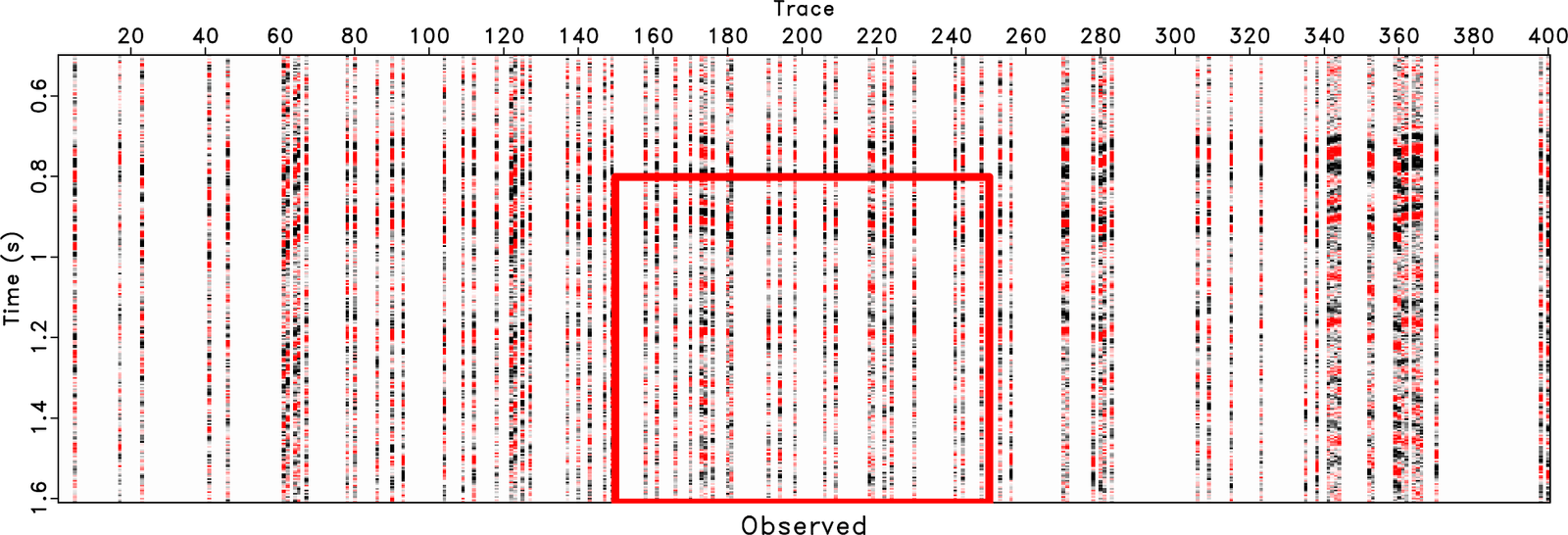A new paper is added to the collection of reproducible documents: Full waveform inversion and joint migration inversion with an automatic directional total variation constraint


As full waveform inversion (FWI) is a non-unique and typically ill-posed inversion problem, it needs proper regularization to avoid cycle-skipping. To reduce the non-linearity of FWI, Joint Migration Inversion (JMI) is proposed as an alternative, explaining the reflection data with decoupled velocity and reflectivity parameters. However, the velocity update may also suffer from being trapped in local minima. To optimally include geologic information, we propose FWI/JMI with directional total variation as an L1-norm regularization on the velocity. We design the directional total variation operator based on the local dip field, instead of ignoring the local structural direction of the subsurface and only using horizontal- and vertical- gradients in the traditional TV. The local dip field is estimated using plane-wave destruction based on a raw reflectivity model, which is usually calculated from the initial velocity model. With two complex synthetic examples, based on the Marmousi model, we demonstrate that the proposed method is much more effective compared to both FWI/JMI without regularization and FWI/JMI with the conventional TV regularization. In the JMI-based example, we also show that L1 directional TV works better than L2 directional Laplacian smoothing. In addition, by comparing these two examples, it can be seen that the impact of regularization is larger for FWI than for JMI, because in JMI the velocity model only explains the propagation effects and, thereby, makes it less sensitive to the details in the velocity model.








